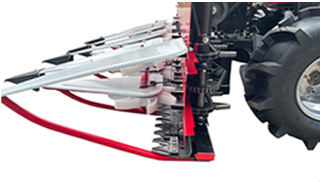Oct . 18, 2024 21:46 Back to list
Understanding the Function and Design of Band Brake Drums in Mechanical Systems
Understanding Band Brake Drum Systems
Band brake drum systems are critical components in various mechanical applications, notably in vehicles and heavy machinery. These systems are essential for ensuring safety and control, especially in high-demand environments. A band brake typically comprises a flexible band that wraps around a drum, relying on friction to slow down or halt a moving part.
The fundamental principle behind band brake drums is friction. When the brake is engaged, the band tightens around the drum, creating resistance against the drum’s rotation. This frictional force converts kinetic energy into thermal energy, effectively slowing down the vehicle or machine. The effectiveness of this braking system is dependent on several factors, including the materials used for the drum and band, the design of the system, and the conditions under which it operates.
One of the most significant advantages of band brake drum systems is their simplicity and reliability. They consist of fewer parts compared to other braking systems, making them easy to maintain and repair. The design allows for a smooth application of force, which is crucial for preventing sudden stops that could lead to loss of control or damage to the vehicle. This type of braking system is commonly found in heavy-duty applications, such as trucks and construction equipment, where reliability is paramount.
band brake drum

The materials used in the construction of band brake drums are also crucial to their performance. The drum is often made from durable metals such as cast iron or aluminum, which provides the necessary strength to withstand the heat generated during braking. The band itself is typically constructed from friction-resistant materials, which can include composite materials or specially formulated rubber. These materials ensure that the band maintains its integrity and performance under intense conditions.
Another critical aspect of band brake systems is their adjustment mechanisms. As the brake components wear down over time, it is essential to adjust the tension of the band to maintain optimal performance. Regular maintenance checks are necessary to ensure that the system operates efficiently. This includes inspecting the band for signs of wear and ensuring that the drum is free of debris or damage.
Band brake drum systems also play a crucial role in the safety features of vehicles. In many modern vehicles, these systems are integrated with anti-lock braking systems (ABS) to prevent wheel lock-up during sudden stops. This integration ensures that drivers maintain better control of their vehicles, especially in challenging road conditions.
In conclusion, band brake drum systems are vital components that encompass a blend of engineering efficiency, reliability, and safety. Their simplicity and effectiveness make them a preferred choice in various applications, from automotive to industrial machinery. As technology progresses, innovations in materials and design continue to enhance the performance and durability of these systems, ensuring their relevance in modern engineering. For those involved in maintenance or engineering, understanding the mechanics and functionalities of band brake drum systems is fundamental, as it underscores the importance of these systems in the realm of mechanical safety and performance. Whether one is dealing with heavy machinery or everyday vehicles, the principles governing band brake drum systems hold significant relevance and application.
-
Durable Brake Drum MAZ for Heavy Duty Trucks | High Performance
NewsAug.26,2025
-
FUWA: Premium Quality, Reliable Performance & Innovative Solutions
NewsAug.25,2025
-
Liza Brake Drum: Superior Quality & Performance for Safe Driving
NewsAug.24,2025
-
Iveco Brake Drum | Premium OE Quality for Daily & Eurocargo
NewsAug.22,2025
-
Your Brake Drum Man: Quality & Performance Parts
NewsAug.21,2025
-
Explore Japan: Ultimate Travel Guide & Authentic Experiences
NewsAug.19,2025
